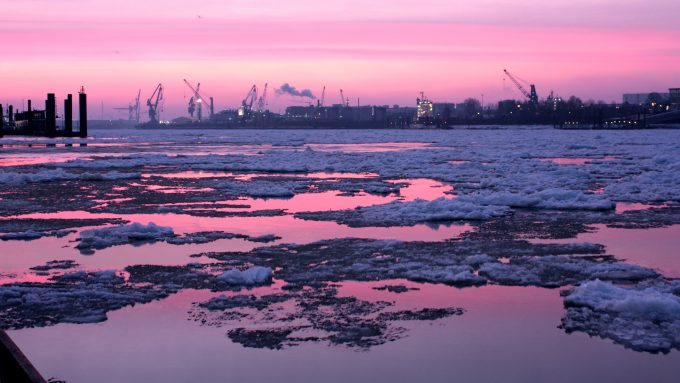Automated postcard from Hamburg
It’s really a people question
GM: RAISING THE ROOF GGM: IN FULL THROTTLE GZIM: MAERSK BOOST KNIN: READ-ACROSSMAERSK: NOT ENOUGHMAERSK: GUIDANCE UPGRADEZIM: ROLLERCOASTERCAT: HEAVY DUTYMAERSK: CATCHING UP PG: DESTOCKING PATTERNSPG: HEALTH CHECKWTC: THE FALLGXO: DEFENSIVE FWRD: RALLYING ON TAKEOVER TALKODFL: STEADY YIELDVW: NEW MODEL NEEDEDWTC: TAKING PROFIT
GM: RAISING THE ROOF GGM: IN FULL THROTTLE GZIM: MAERSK BOOST KNIN: READ-ACROSSMAERSK: NOT ENOUGHMAERSK: GUIDANCE UPGRADEZIM: ROLLERCOASTERCAT: HEAVY DUTYMAERSK: CATCHING UP PG: DESTOCKING PATTERNSPG: HEALTH CHECKWTC: THE FALLGXO: DEFENSIVE FWRD: RALLYING ON TAKEOVER TALKODFL: STEADY YIELDVW: NEW MODEL NEEDEDWTC: TAKING PROFIT

The port of Hamburg’s inability to maximise ship loads is causing it to fall further behind neighbour container terminals in Northern Europe.
The impact of the river Elbe’s draught restrictions has become more pronounced with the advent of larger vessels, which cannot maximise capacity – as the port’s latest quarterly results show.
First-quarter figures from the German gateway show virtually flat growth (up 0.7%, 1.9m teu), while Antwerp was up 10.7%, 2.7m teu, and Rotterdam was up 6.1%, 3.5m teu.
One industry source told The Loadstar: “Hamburg has lost more ground to Rotterdam and Antwerp this quarter and the Elbe deepening project cannot come soon enough for the port.
“It rather defeats the strategy of the carriers who have invested millions in bigger ships to reduce unit costs if the ULCVs have their utilisation levels cut back by load restrictions.”
More worryingly, empty container movements at Hamburg – indicative of overall trade flows – fell sharply at 18% year on year, maintaining a recent trend in the port’s quarterly results.
Joint chief executive Axel Mattern said he had to accept a drop in empty container movements, but said that,with the Elbe deepening project under way, carriers had altered the way they used the port. And he described the growth (albeit minimal) in full container load movements as positive news.
“A glance at handling trends for first-quarter handling of loaded and empty containers indicates that on the one hand, the port of Hamburg still continues to gain cargo,” said Mr Mattern. “On the other, it has to accept a sharp drop in empty container volumes. In contrast with loaded boxes, empties are less port-related and routing them is therefore a more volatile process.”
And it was not only empty movements that were declining, so too were services between the east coast of North America, the Baltic, and India and Pakistan.
However, the port’s largest trading partner, China, continued to send improving container volumes, with traffic up 4.5% year-on-year, with joint chief executive Ingo Engloff praising the growth.
“China is by a wide margin the port of Hamburg’s most important trading partner, and we can report a distinct advance in container traffic,” said Mr Engloff.
He added: “Substantial growth also occurred on container services with Brazil [up 37.7%], Sweden [up 38.5%] and Israel [up 63.8%]; new or expanded services… [being] one reason for this positive trend.”
In November, a German court threw out the latest objections to the Elbe deepening project, which involves plans for the 385-metre channel to increase capacity for ULCVs by 1,800 teu per call.
While the decision made it clear that the project would go ahead, there has been little news on when the project will start – although there are hopes it will be before the year is up.
Comment on this article